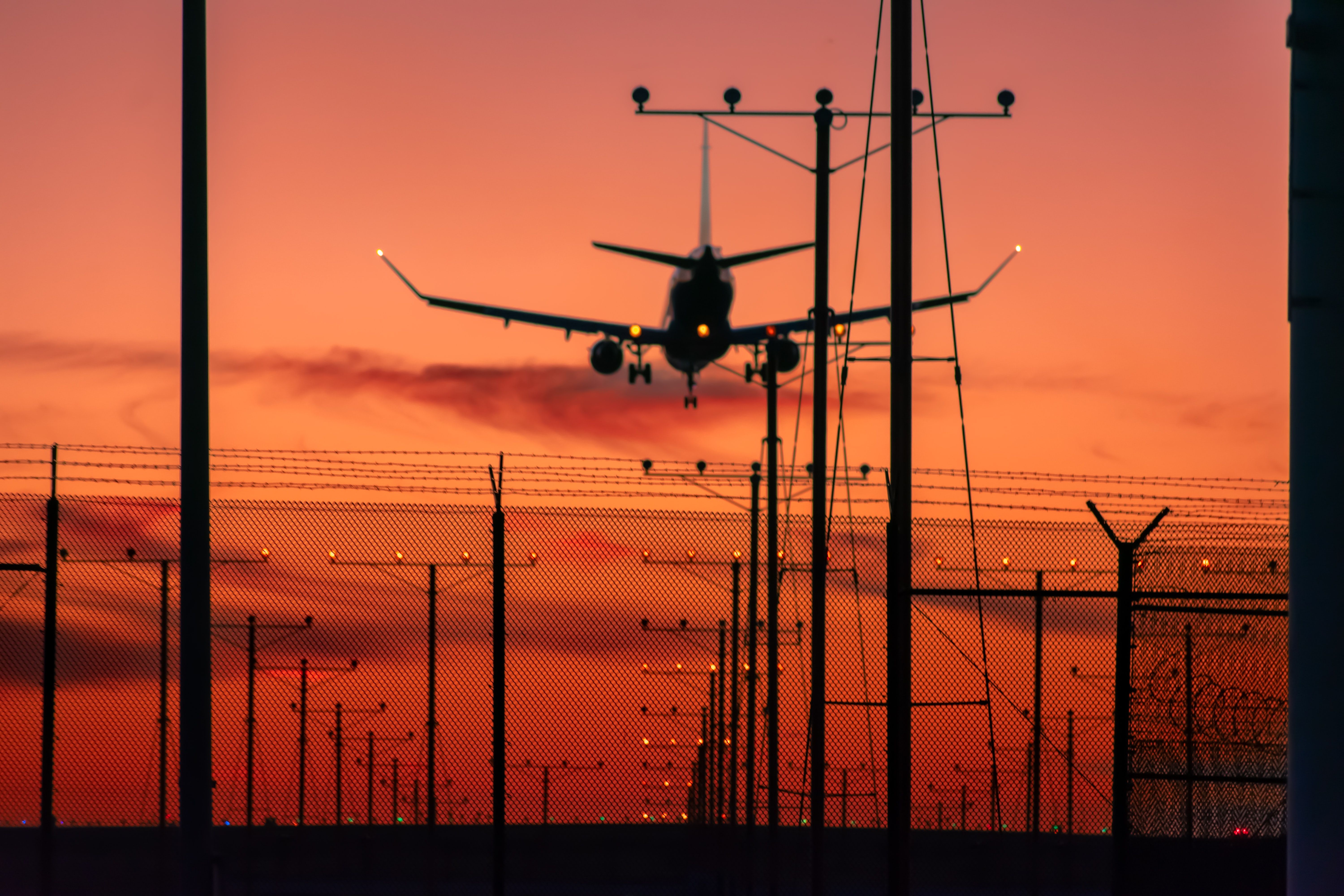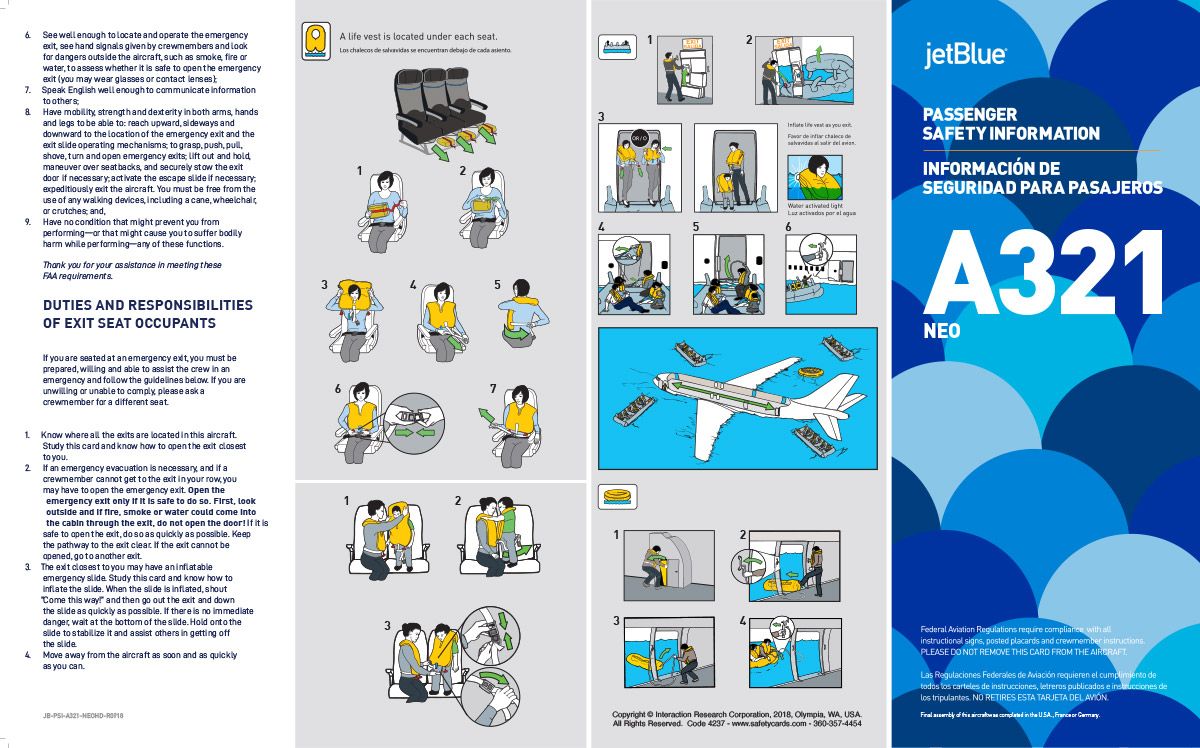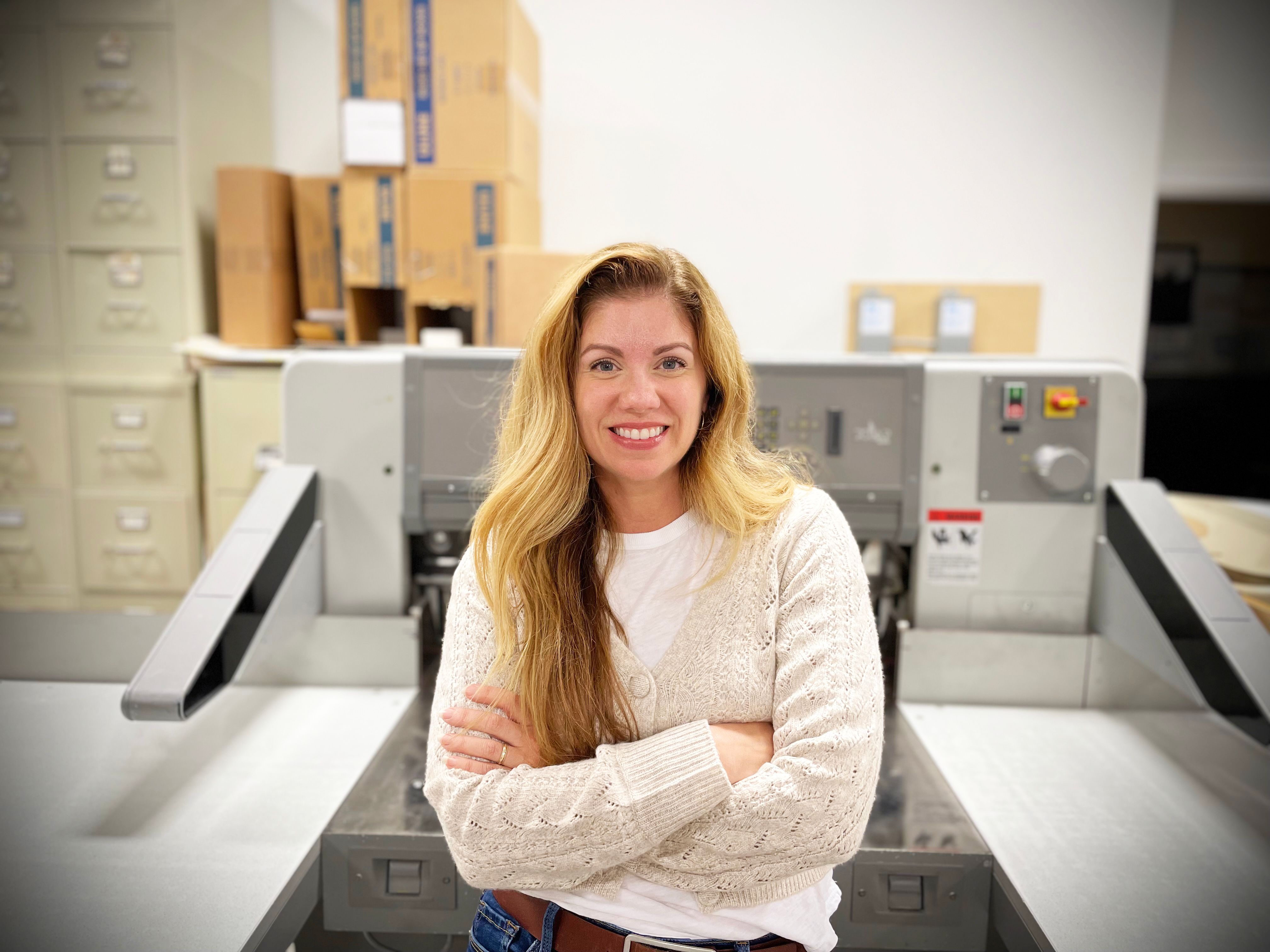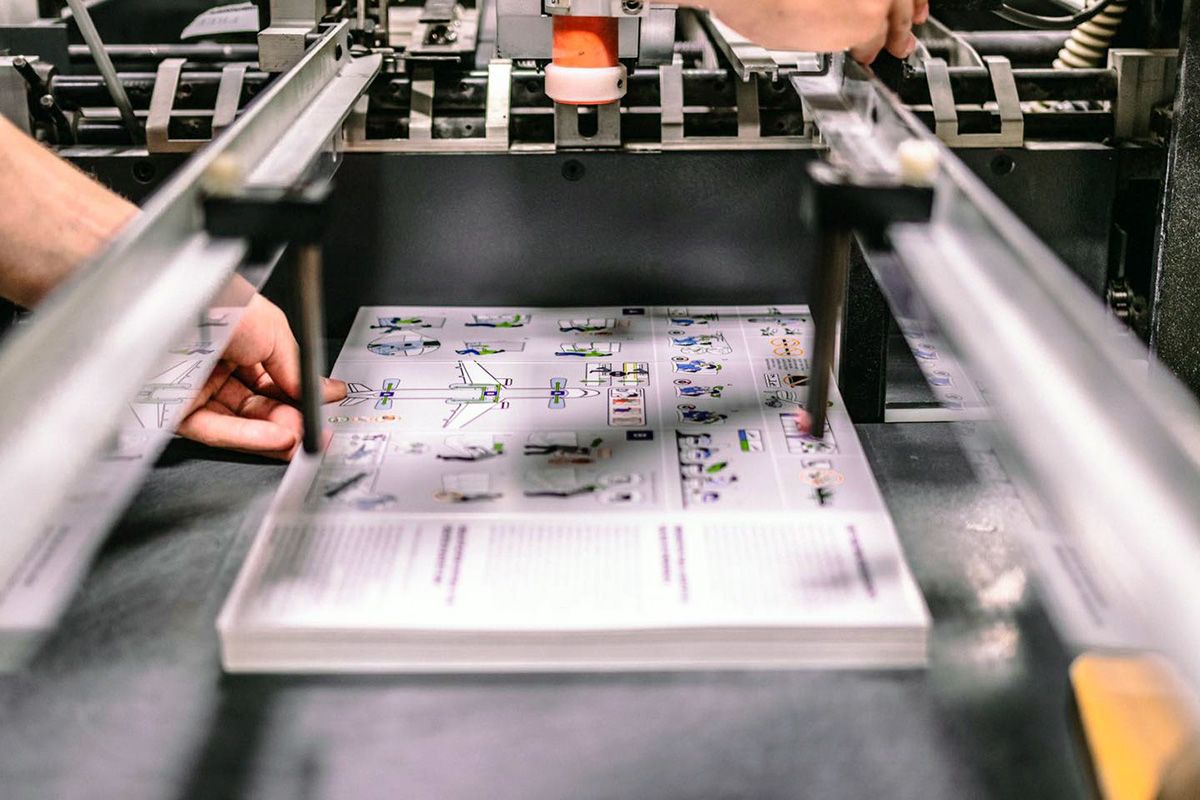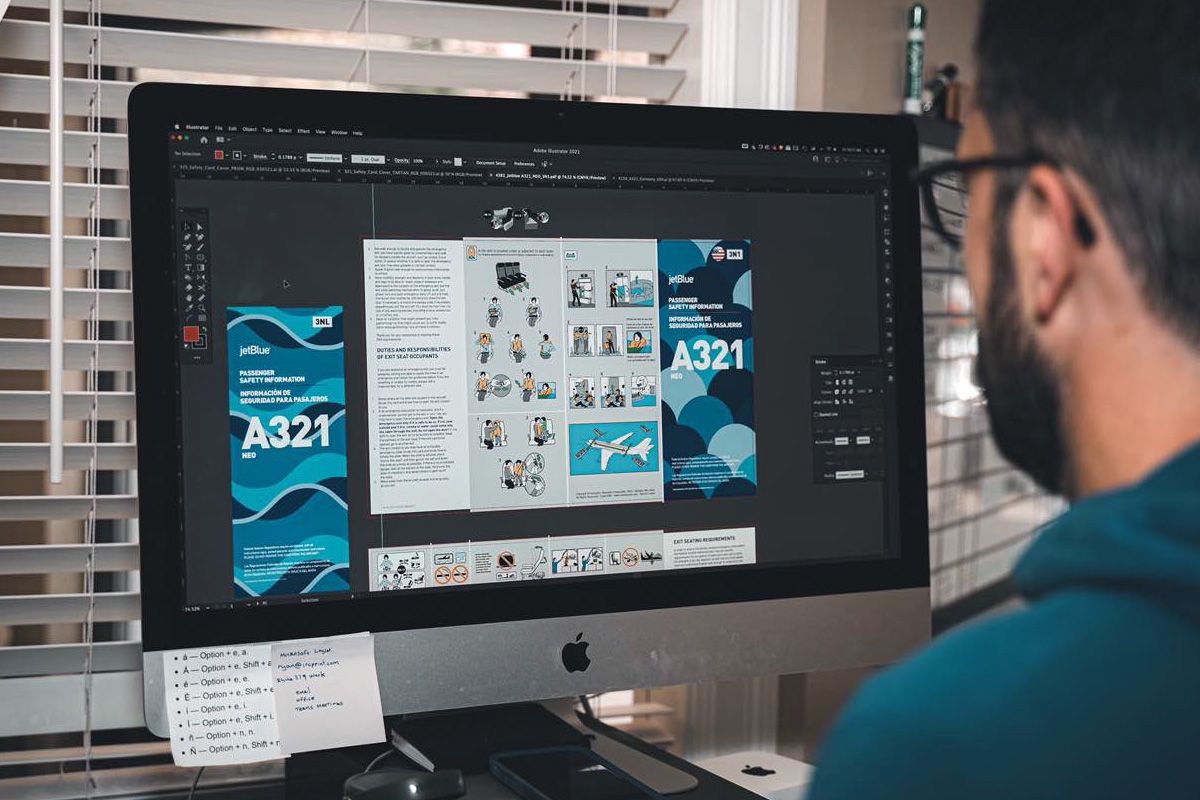A few weeks ago, Simple Flying had the chance to chat with Trisha Ferguson, CEO of The Interaction Group, one of the world's largest producers of safety cards. The Interaction Group has worked with over 600 airlines and has over 50 years of experience.
History
The first safe card was created in the 1920s and has evolved significantly in the last 100 years. When safety cards were first made, they were almost entirely text-based. Safety cards took around 40 years to transition from primarily text-based to image-based, as we know them today.
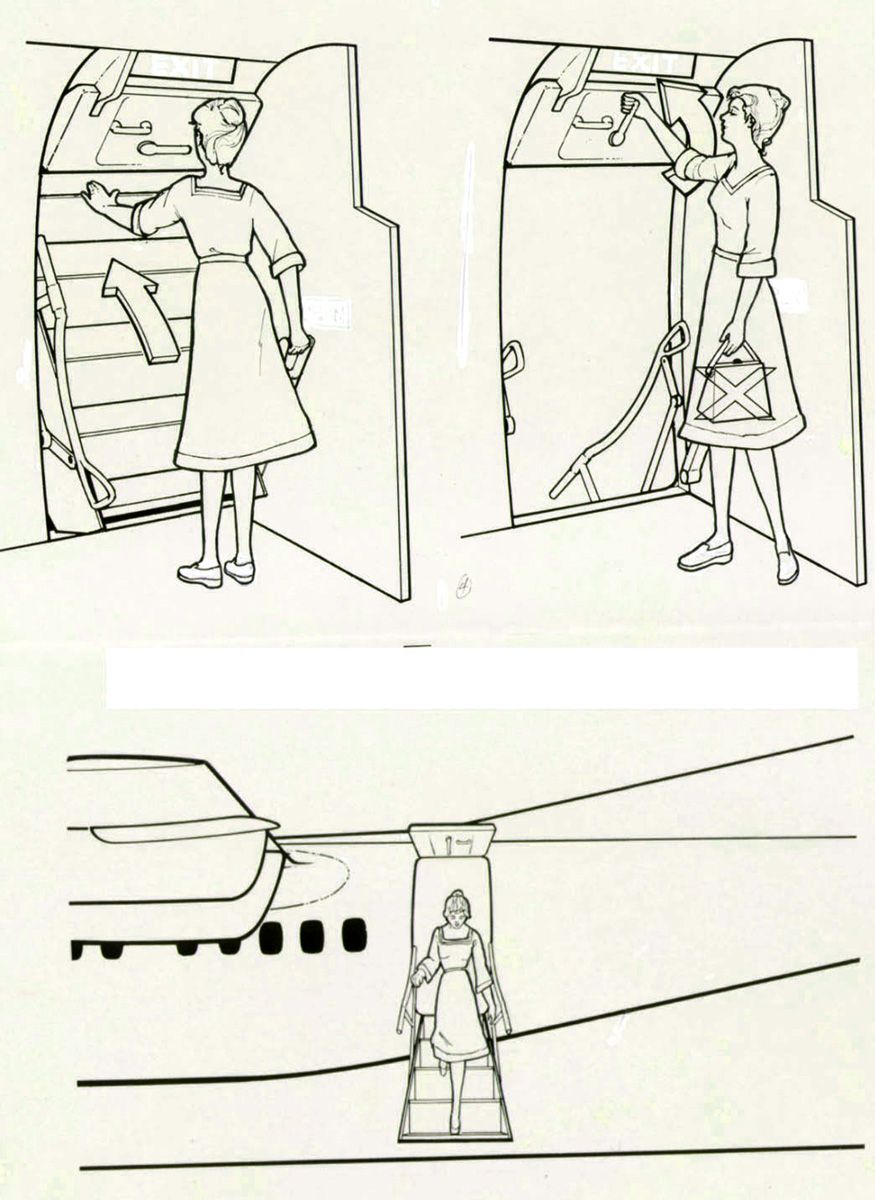
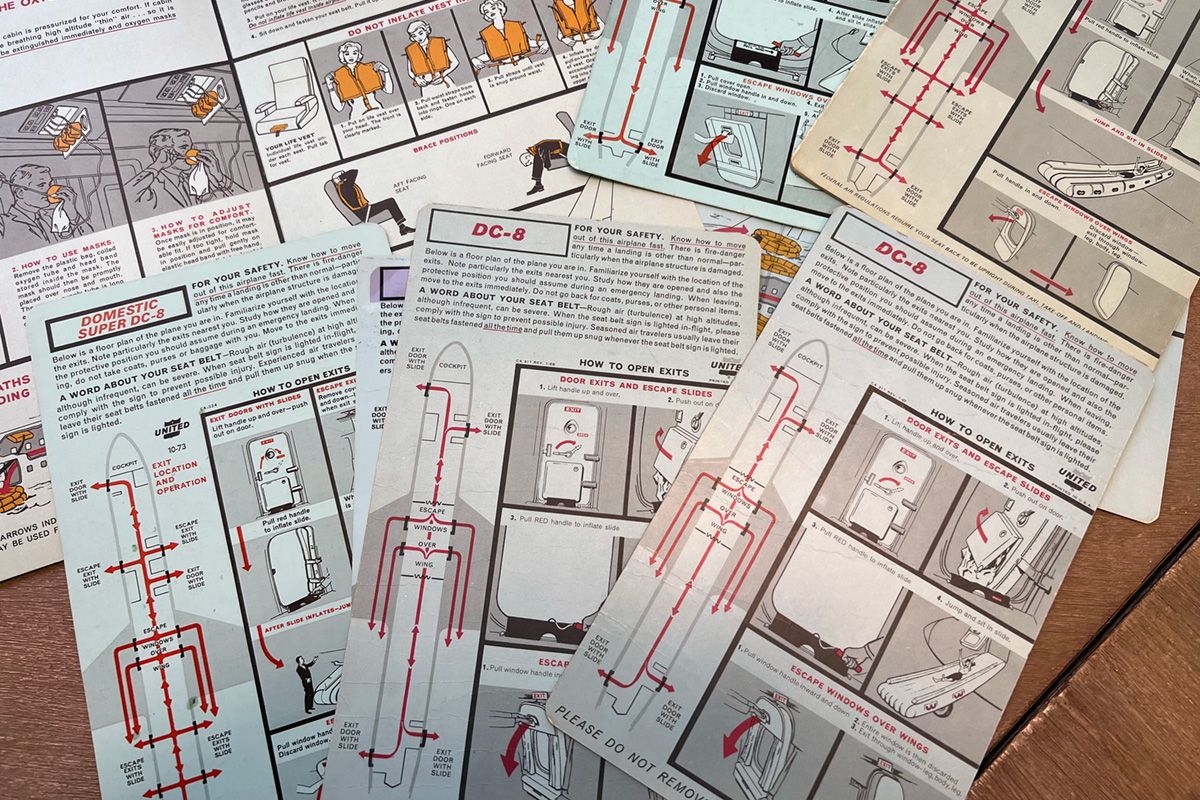
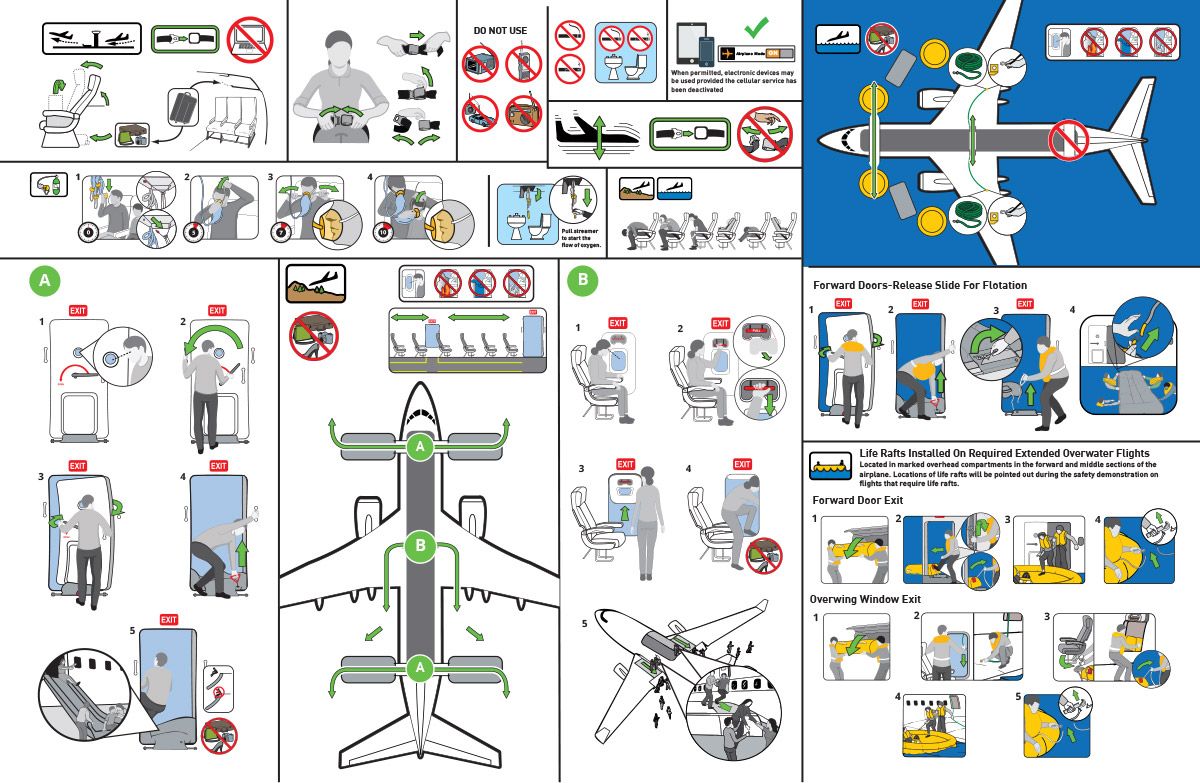
In the 1960s, the Douglas Aircraft Corporation hired two psychologists, Dr. Daniel A. Johnson, Ph.D., and Dr. Beau Altman, to research aircraft safety. In 1971, the Interaction Research Corporation (IRC) was incorporated to enhance airline passenger safety and two years later, created the first-ever passenger safety video. The video was used on the Chrysler Corporation's FAR Part 91 aircraft.
The IRC's work became essential to creating new safety requirements implemented by the Department of Transportation. Many passenger information and safety laws are in place today, largely due to the IRC's owners testifying before Congress and emphasizing the importance of creating a standard for passenger safety.
The Interaction Research Corporation was no stranger to innovation, and in 1990, 12 years after beginning to test braille cards, it began to publish braille cards. In 1995, now CEO Trisha Ferguson joined the IRC team as the Business Manager and Director of Operations.
Trisha Ferguson
When Trisha joined the team, IRC only offered design and consulting and outsourced all of its products. One year after becoming the owner and CEO of IRC, Trisha acquired a commercial printing company and turned it into a subsidiary of IRC.
"I just wanted, for the benefit of our clients, to bring the service of being in control of our turnaround times and distribution. We took the corageous step and opened a commercial printing company." - Trisha Ferguson, CEO, The Interaction Group
The Interaction Research Corporation was launched in a garage in Long Beach, California, and in 1980 relocated to Olympia, Washington, where it is located to this day. In 2007, though IRC was already in Olympia, it moved to a new facility to facilitate its expansion.
Earlier this year, IRC's name was changed to The Interaction Group. Today, the company works with more than just aviation safety, it has expanded into maritime and building safety.
Creating safety cards
The creation of the safety cards is not a simple design process in the Adobe Creative Suite.
The FAA has strict regulations, and airlines have a regulatory person or team to approve the work. Before finalizing the design of a card, a minimum of 50 people are selected to review the card. If less than 90% of those people do not understand the instructions on the card, The Interaction Group will revise the design until a minimum of 90% is reached.
The Interaction Group is now the world's largest and most innovative passenger safety briefing card supplier. The group handles the entire creation of the card, from designing the images to setting the layout, testing, print production, and distribution.
Its clients include Lufthansa, American Airlines, WestJet, Air Canada, and United Airlines. But the list does not end there; The Interaction Group has now worked with more than 600 airlines.

